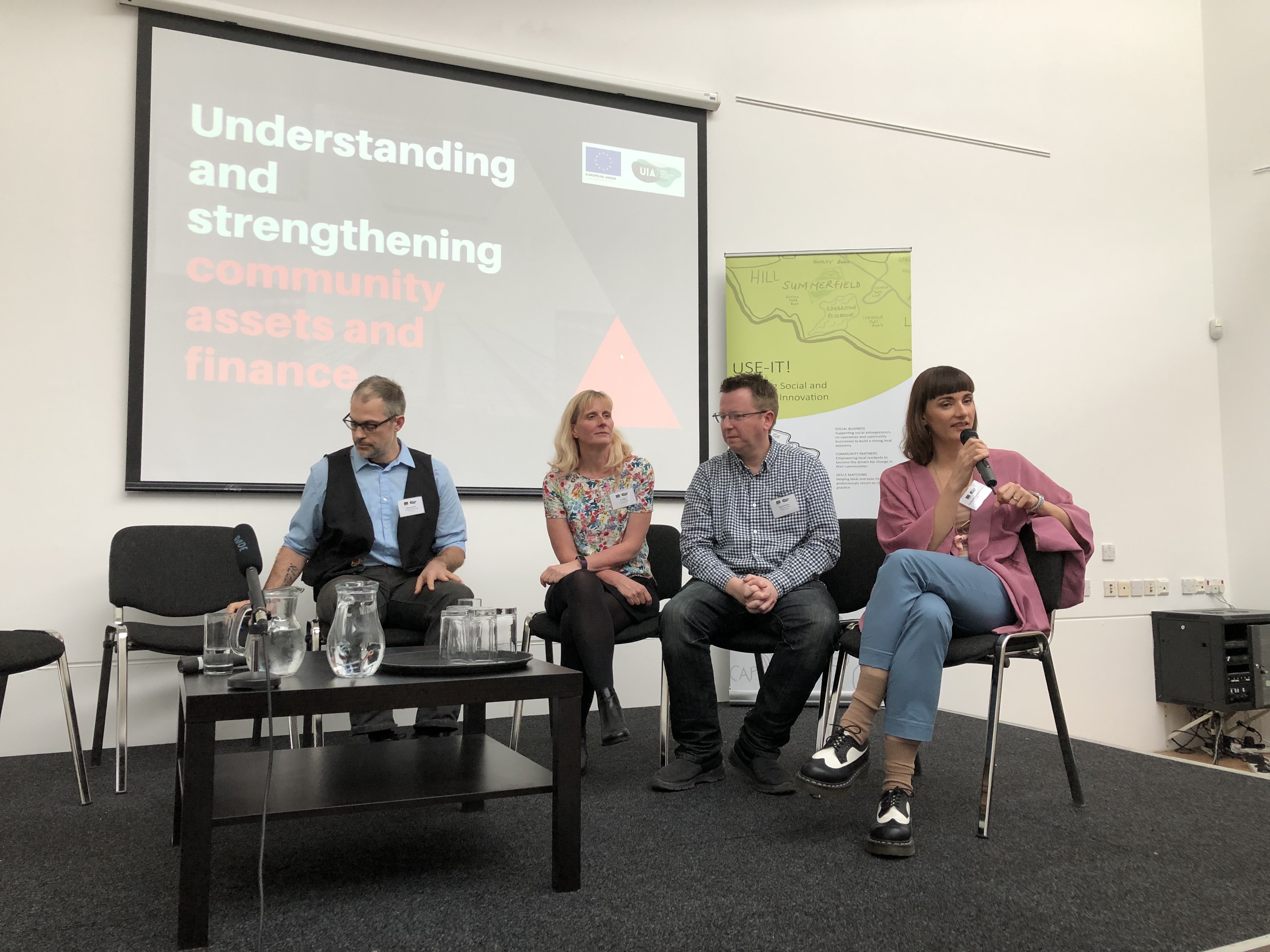Jo White from Co-op Futures and Conrad Parke talk us through community economic development plans as established in the USE-IT! project.
What is a Community Economic Development plan, and how does that relate to needs in Ladywood?
Conrad: One definition of CED describes it as “a process of economic development within a specific area to benefit the local community led by people living, working and running businesses in that area. Building on the knowledge, experience and resources in that community, it identifies and maximises the local economic opportunities available.” The reason USE-IT! chose to adopt this approach is that communities such a Ladywood, i.e. communities described as long term disadvantaged or “left-behind”, generally only benefit from economic opportunity by being at the bottom end of a top-down model. Or, to put it another way, residents of an area like Ladywood can usually only expect to benefit from, say, a major city-centre investment or a major housing development by being offered entry level jobs that are low skilled and poorly paid (cleaners, shop assistants, security guards, baristas etc). By using the CED approach USE-IT! hoped to generate far more aspirational opportunities for Ladywood residents (i.e. business start ups, skilled employment) resulting from the investments planned for the area.
Jo: A community economic plan is all about the process of understanding and forming the local economy rather than writing a plan. It is all about re-shaping the underlying economic system in a place. It uses the economy as a means to an end for the community rather than being the end in itself, the economy becomes a system whose ultimate goal is human wellbeing - within environmental limits.
It is led by the community from residents to local businesses and voluntary sector organisations to service providers and statutory agencies. It builds on their knowledge and understanding of the strengths of the community and the assets based there.
In areas like Ladywood and Smethwick communities don’t feel that the traditional economic strategies have anything to do them. They don’t directly feel the benefits of economic strategies and policies set by Governments at both a national and local level. The process of creating a community economic development plans helps communities to understand their own economic environment and can give them the confidence to make it work for them.
How have you practically involved and engaged the community and organisations in the development of this?
Conrad: It is important to understand that USE-IT! did not start from deliberately planning to utilise the CED approach. Rather, USE-IT! started from wanting unlock local assets to benefit the local community. In three cases assets were identified that we felt would benefit from a CED plan. In each case a community organisation was identified, or self identified, that would be the obvious starting point to then bring together a wider partnership. So, for example, when the playing field next to Edgbaston Reservoir was identified as an underutilised asset USE-IT! worked with a local and well established Community Animator who then brought together the Summerfield Alliance – a partnership of local neighbourhood organisations. The Summerfield Alliance then developed their CED plan for the reservoir playing fields.
Jo: 18 months into the USE-IT! Programme and the partners were beginning to build fruitful relationships with local community organisations. Through these relationships it was recognised that the communities had a strong sense of their own strengths but needed a framework to unlock them. USE-IT! was able to facilitate the partnerships that helped to make that happen. Discussions were started with local organisations about what community economic development was and how the process could help to increase the community’s power to bring change. Through these conversations local community-based organisations in three areas put themselves forward to lead the process. In one area the plan was focused around an underused playing field, in another the plan was a refresh of one that had been written three years earlier and one looking at a holistic plan for a geographical area.
What are some of the specific outcomes you’re seeing, or hope to see in the future from this?
The general outcome we are looking for is to see communities taking the lead, if not control, of an underutilised local asset and bring it back to back to life in a new way . In specific terms the outcomes we have seen are as follows:
The overall outcome is that a community has a shared vision for the local economy and have the tools to take control of it. Community economic planning is not a one-time thing. It is about helping local communities to recognise how what they do has an economic impact and how it can be used for the benefit of everyone. In the context of USE-IT! the starting point for the plans has been about physical assets but the process is already leading to other outcomes.
Summerfield Alliance – Have organised a number of community fun days and consultation events on a playing field owned by a local charity, Birmingham Settlement. This has resulted in a successful community led planning application to create a community hub on the site in partnership with Birmingham Settlement. The process gave the Alliance the confidence to bring together a wider partnership to submit a community led vision for the local reservoir in response to a consultation being held by Birmingham City Council. A vision for “what we want, not what we don’t want”.
Smethwick CAN – Have taken unused space in a local church and created ChangeSpaces, a co-working space for local entrepreneurs, small businesses and start-ups that is now already fully occupied.
Soho 1st Community Development Trust – Have started from earlier in the process in that they are still researching the assets they might have available to them before developing the plan to unlock them for local economic benefit.
To discuss our experience of CED plans further, contact Jo White jo.white@futures.coop

